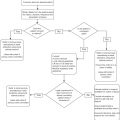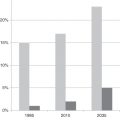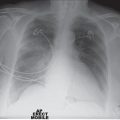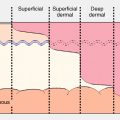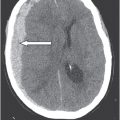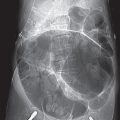Chapter 2
Essentials of assessment and management in geriatric emergency medicine
Introduction
Assessment of older adults in the emergency setting is relatively resource-intensive. History taking may be challenging in patients with acute or chronic cognitive impairment, and obtaining the essential collateral history from carers or a long-term care facility can be time-consuming. Two-thirds of people over the age of 65 have multiple chronic health conditions (1), which along with polypharmacy complicates the clinical presentation and makes decision-making on clinical management intellectually complex.
Atypical, multifactorial, and non-specific presentations are par for the course in older adults. A thorough assessment can rarely be done rapidly. This contributes to the pressure on providers in today’s crowded emergency departments.
This chapter aims to provide help with the initial triage of acutely ill older people and provide guidance on history taking and examination of older patients with particular focus on making the assessment efficient, taking a brief functional history and considering an overview of initial investigation and management strategies.
Triage and initial assessment
Older patients attending the ED are more likely than younger patients to have severe illness or injury (2). Prompt triage is vital to ensure timely identification of life-threatening presentations, address acute pain and initiate appropriate investigations.
In older patients, the degree of illness severity may be underestimated, leading to delays in medical assessment or inappropriate placement within the ED.
Triage also offers an opportunity to identify frailty, delirium or other specific conditions which may prompt early involvement of specialised services, such as early comprehensive geriatric assessment. Identifying patients likely to be admitted (including use of tools such as the ISAR (identification of seniors at risk) score – see below) may reduce the risk of prolonged boarding in the ED whilst awaiting an inpatient bed.
Patients with a high illness severity score, abnormal vital signs or who appear critically unwell should be transferred to the resuscitation room or a monitored area and a systematic ABCDE approach to primary assessment should be undertaken in line with Advanced Life Support guidelines (4).
Note: The initial assessment of trauma patients is covered in Figure 11.1, Chapter 11.
Decisions and discussions regarding goals of care and resuscitation in older patients are covered in Chapter 3.
Communication with older patients
Once acute life-threatening illness and associated physiological disturbance has been identified or excluded and the critically ill patient has been appropriately stabilised, a more thorough assessment can begin. Optimising communication before beginning any further assessment can make the history and examination process more efficient.
Positioning and body language
Sit or crouch down so you are at the patient’s level and able to make eye contact and appear non-threatening. Relaxed and open body language is particularly important and appropriate physical contact, for example, hand-holding can provide reassurance for some patients. Do not appear impatient, even if you feel overwhelmed by a large volume of work because many older patients already feel they are a burden. If you appear rushed, patients may react by becoming withdrawn or omitting details from the history in an attempt to save you time.
Vision and hearing
Ensure any visual or hearing aids are in place and working correctly. If a patient is blind, then make sure they know where you are positioned; touch and verbal explanation can be useful. Very deaf patients pose a challenge. Every effort should be made to optimise their hearing: ensure hearing aid batteries are fresh (there is usually a supply on most medical wards) and speak slowly and loudly into their good ear without shouting. If this fails, write things down, this is quicker, more effective and more respectful than needing to repeat questions several times. Many providers find that portable amplifiers (also called ‘pocket talkers’) can be an invaluable communication tool to have available.
Communicating with the cognitively impaired
Smile, maintain eye contact as much as possible, speak clearly using short clusters of words, and do not rush. Use a friendly and positive tone of voice. Closed questions may be easier for cognitively impaired patients to answer; however, before embarking on a list of medical questions, try to establish a rapport. Be patient and respectful throughout, do not patronise.
Initial cognitive assessment
Before taking any detailed history, a quick assessment of your patient’s cognitive state is necessary, as patients who are cognitively impaired may be less able to provide a detailed history of recent events or answer functional assessment questions accurately.
Many patients will have cognitive impairment, often with overlying delirium. Despite this, in most centres, over 50% of older people are not screened for signs of cognitive impairment on admission.
Screen for evidence of cognitive impairment after introducing yourself and establishing rapport. A possible way of introducing such an exercise could go as follows:
So, before we really get started on why you are here, I was hoping to ask you a few quick questions to just check that you are up-to-date with everything, and that your concentration is OK. We ask everyone over 65 these questions, and some of them might seem a bit strange, so try not to worry if you have any trouble with them…
The 4 ‘A’s Test or 4AT (www.the4AT.com) is a recently validated rapid assessment for delirium. It also incorporates two short cognitive items so as to avoid requiring a separate cognitive testing instrument at the point of initial assessment. The 4AT generally takes only 2 minutes to complete and its brevity makes it suitable for acute situations. There are many other screening tests that can be used in the ED including the Mini-Cog, the Ottawa 3DY (O3DY), the Brief Alzheimer’s Screen (BAS), the Short Blessed Test (SBT) and the caregiver-completed AD8 (cAD8) which are not discussed here (6, 7).
History of presenting complaint
The history of presenting complaint in an older person without cognitive impairment is much the same as in a younger person, although there are some additional challenges that need to be considered.
Chronic versus acute symptoms
Try to begin with open questions, but be aware of the fact that many older patients have longstanding symptoms that are attributable to chronic comorbidity and are present most of the time. The key thing here is establishing whether these chronic symptoms have changed in any way recently or are affecting the patient’s function in a way they previously had not. Statements such as ‘has this changed over the last few days or weeks?’ or ‘does this feel the same as it always has or is it different to normal?’ can help clarify these issues.
Cognitive impairment
Patients with cognitive impairment may find it difficult to recall the events leading up to their admission or to identify any recent changes in their health; however, this does not mean that cognitively impaired patients are unable to provide any meaningful history. Cognitively impaired patients are mostly still able to answer questions about any symptoms they are having at the time of your assessment and express any fears or worries that they have.
Collateral history
The ability to take a collateral or ancillary history is an essential skill in anybody involved with caring for older people. It provides crucial information and also helps place the patient in the context of their wider social circumstances. Finally, a conversation with friends or family also provides an excellent opportunity to identify carer stress.
What to ask
See Table 2.1.
Table 2.1 How to take a collateral history
| What you are checking | How to check it |
| Cognition and behaviour | Normal cognitive function? Are they more confused than normal? Any suggestion of decline in cognitive function over months/years? Previous episodes of delirium? Other changes in behaviour: sleeping, eating, going out unexpectedly |
| Physical health | Symptoms suggestive of recent illness or new incontinence? Recent visits to the primary care physician/recent stays in hospital? Recent falls or head injuries? Eating and drinking normally? Weight loss? |
| Medications | Who deals with the tablets? Any recent changes? Over-the-counter use? Evidence of non-compliance? |
| Functional status |
|
| |
| |
| |
| Alcohol | Is there evidence of excess alcohol intake? Who buys the alcohol and how much, how often? Have there been alcohol-related health problems in the past? |
| Strong feelings (patient and carer) | Any particular fears or worries? E.g. refusal to accept help/recent bereavement Carer stress: do they feel overburdened? Are they struggling to provide all the support required? Any strong feelings about care homes? |
Whom to ask
Family and friends
When?
Immediately following your initial assessment if they are in attendance or as soon as possible following admission.
How?
Ideally in person although telephone calls are acceptable.
Family, friends or neighbours can provide enormous informal support to older people living alone in their homes. Whoever is closest to the patient will probably be able to provide the richest source of information. Remember, family who visit once every 2 or 3 weeks may be less aware of problems than a neighbour who pops in most days to help with tasks such as taking the rubbish out or collecting the weekly shopping.
The primary care physician
When?
During working hours within the first few days of admission.
How?
Usually by telephone.
The primary care physician (PCP) may know the patient very well, possibly over a number of years, and have a good knowledge of any social or interpersonal factors contributing to the admission such as family anxiety or social problems. They are also able to provide an up-to-date list of medications and detailed medical history.
The homecare providers
When?
During the course of an admission or when discharge planning.
How?
Usually by telephone, often made by the nursing staff.
Care staff visiting patients at home can be difficult to track down; however, contacting the care agency manager can sometimes provide useful information on observations carers may have made about issues such as increasing dependency, poor living conditions or generally declining health.
The paramedics
When?
At presentation to the emergency department or acute medical unit.
How?
In person. If you don’t catch them now, you never will.
Having literally just come from the patient’s place of residence, they can tell you what it is like and whether there are obvious problems that need to be addressed.
The nursing home
When?
During your initial assessment as part of the history taking process.
How?
By telephone, 24 hours a day.
Collateral history from a nursing home is slightly different, and the patient will often come with formal transfer documents detailing medications, functional ability, cognitive ability and observations. Despite this useful information, there is sometimes little detail regarding the actual presenting complaint. For example, ‘blacked out in lounge’ is not enough information, so most nursing home admissions should be followed-up with a telephone call and a collateral history of presenting complaint taken from the care staff. Care home staff should also be asked about the resident’s normal level of cognition and behavioural functioning.
Systematic enquiry
In an older person with many chronic problems, a systematic enquiry can seem a daunting task. However, much important information can be revealed, some of which will be useful in the immediate diagnostic summary and management plan. A more accurate history will save time in the long run as the treatment and management of the patient can often be more targeted than would otherwise be possible.
Benefits of a thorough systematic enquiry:
Stay updated, free articles. Join our Telegram channel

Full access? Get Clinical Tree


